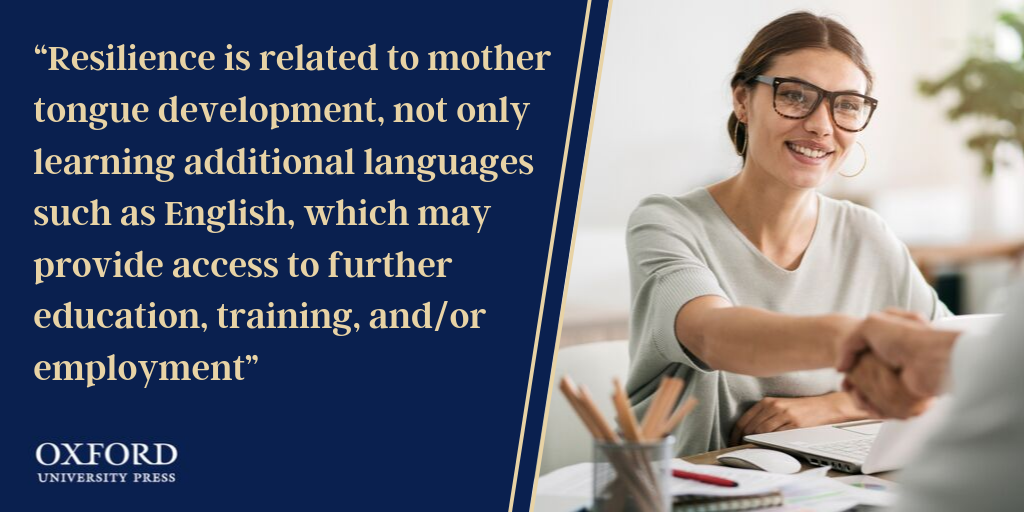
How does learning English support the resilience of an individual?
In ELT there has been a particular focus on building individual resilience, as education places more importance on learners’ mental health. Resilience of students, particularly from communities of migrants and refugees, can be built by combining personal development with the development of skills for employment. While acquiring age-appropriate levels of literacy and mastering a new language, it is essential to ensure that spoken and written forms of the mother tongue are also affirmed. This bilingual resilience-building model results in better academic performance, literacy rates and language learning, all of which enhance children’s likely success in education and future employment. Thus, success is related to developing the mother tongue as well as additional languages such as English.
How does a bilingual resilience-building model support communities that have fled conflict?
Opportunities to use home languages when learning English create inclusive learning environments less likely to marginalise children based on social, ethnic, or gender. In addition to benefiting academic performance and language development, these language programmes also foster inter-generational ethnic connections, increase family cohesion, and support cultural identities. This is achieved by helping English language learners bring home languages and cultures into the classroom.
Where can I learn more?
Below is an infographic from ELT Journals, outlining the role the ELT classroom plays in building personal and academic resilience. You can find the full article, including references, below: